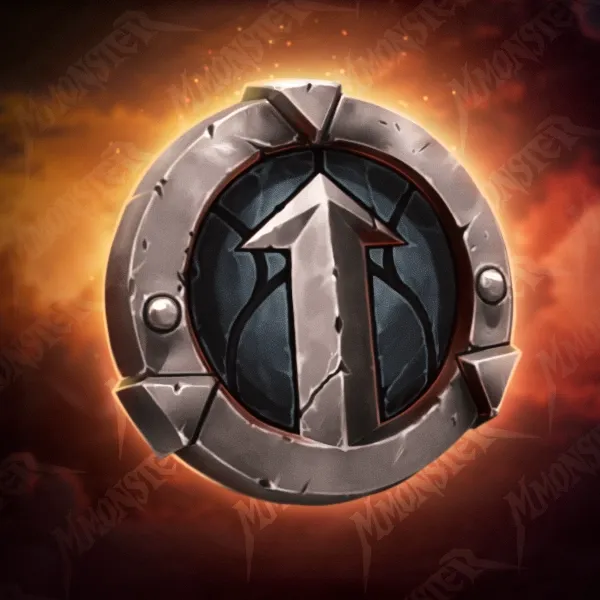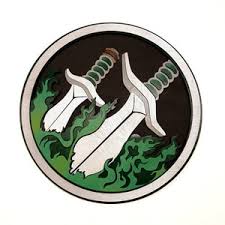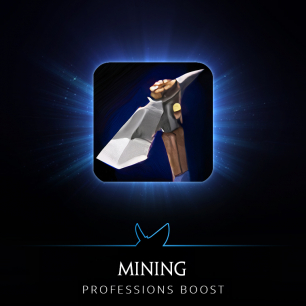WoW Classic Hardcore Rogue Guide
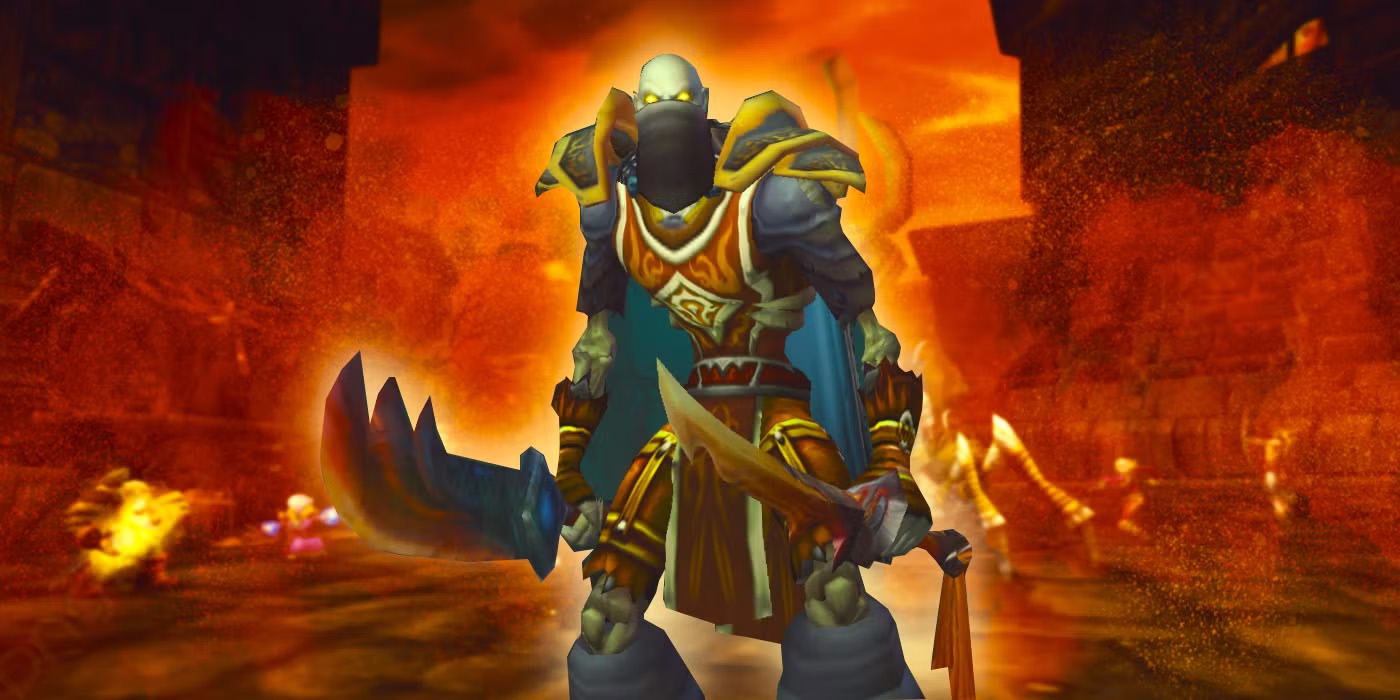
Welcome to the ultimate guide for surviving and thriving as a Hardcore Rogue in WoW Classic! Rogues are masters of stealth, burst damage, and crowd control, making them exceptionally well-suited for the perilous one-life Hardcore challenge. This comprehensive guide will cover everything you need to know – from efficient leveling paths and optimal talent builds to crucial survivability tips, weapon progression, best-in-slot gear, essential macros, PvP survival strategies, profession choices, and clever escape techniques. Both newcomers and veteran rogues will find valuable insights here to conquer Hardcore mode with style and confidence. Prepare to embrace the shadows and emerge victorious!
Rogue Hardcore Pros
- Stealth Advantage: Can skip dangerous mobs and navigate risky areas safely.
- High Burst Damage: Quickly eliminate targets before they can threaten you.
- Escape Tools: Abilities like Vanish, Sprint, Blind, and Evasion provide multiple panic buttons to avoid death.
- Crowd Control: Sap, Gouge, Kidney Shot, etc. allow controlling multi-mob engagements, reducing overwhelm.
Rogue Hardcore Cons
- Fragile Survivability: Light armor and low health pool – mistakes or being caught out of stealth can be punishing.
- No Self-Healing: Rogues lack native heals, relying on First Aid and potions for recovery.
- Limited AoE Capability: Outside of cooldowns like Blade Flurry, handling groups of enemies is challenging without careful CC.
- Resource Management: Energy can limit sustained damage, and preparation (poisons, reagents) is needed for maximum effectiveness.
Leveling a Hardcore Rogue
Leveling a rogue in Hardcore mode is a thrilling tightrope walk between swift assassination and calculated retreat. Rogues excel in solo play and can level efficiently by cherry-picking battles and avoiding unnecessary risks. The key is to leverage your strengths – stealth and burst damage – while mitigating your weaknesses (squishiness and lack of self-heals). Below we'll cover race choices, questing strategies, and general leveling tips to speed your journey to 60 without falling victim to permadeath.
Recommended Races (Alliance & Horde)
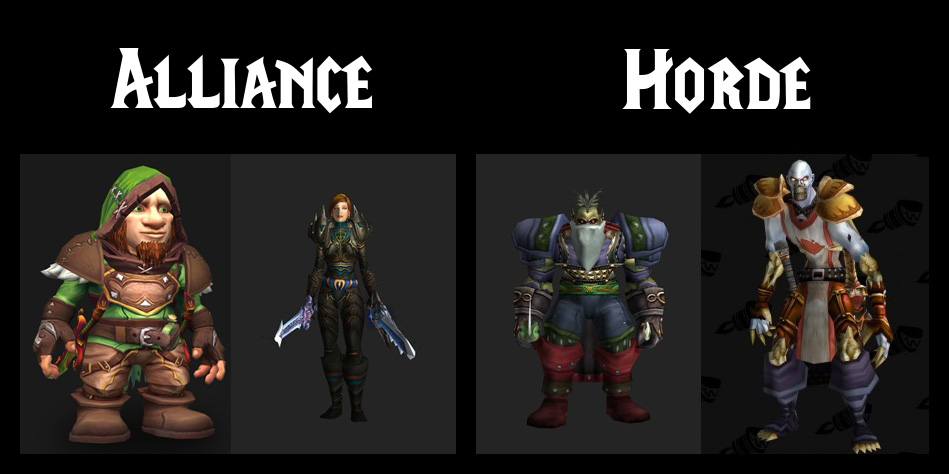
Choosing the right race can give your rogue an extra edge in Hardcore. Each faction has options that boost your survivability or damage in subtle ways:
- Alliance – Human or Gnome: Humans are top-tier for endgame PvE thanks to Sword Specialization (extra weapon skill means more hits and crits with swords/maces). However, that benefit doesn't shine until higher levels. Gnomes, on the other hand, are fantastic for Hardcore leveling – their Escape Artist racial lets you break free from immobilizing effects (net, roots) which is a potential lifesaver if you need to flee.
- Horde – Orc or Undead: Orcs are widely considered the best overall Horde rogue choice. Blood Fury grants a burst of melee power (great for faster kills), and Hardiness gives a 25% stun resist chance – huge for surviving PvP ganks or accidental PvE stuns that could otherwise be fatal. Undead (Forsaken) bring the incredible Will of the Forsaken to break fear/charm/sleep effects, potentially saving you from feared-into-mobs scenarios.
No matter your race, the differences are not make-or-break; skillful play matters far more. Pick a race whose abilities complement your playstyle and enjoy the thematic flavor as you embark on the Hardcore journey.
Efficient Questing and Grinding
As a rogue, you should prioritize quests that are green or yellow (at or below your level) to minimize risk. Rogues can stealth through heavily guarded areas to complete objectives that other classes might skip, but always gauge the danger – even a stealthed rogue can be unmasked by an errant patrol or stealth-detecting mob. Use your stealth to bypass unnecessary fights, completing quests efficiently and safely.
Whenever possible, cluster your quests so you're completing multiple objectives in the same area. This minimizes travel time and exposure to danger. Hardcore leveling is all about risk management: a bit of grinding on easier mobs can sometimes be safer than a high-risk quest with poor reward. For example, if you're one bar away from a level, it might be smarter to grind it out on level-appropriate mobs than to tackle an orange (high-level) quest.
Avoid high-risk content solo. Elite quests, cave networks full of mobs, or quests that lead you deep into enemy towns (looking at you, Surprise Attacks in Arathi) can be death traps in Hardcore. Either skip these or attempt them only with a full plan (and perhaps a group). Rogues can solo certain elites by using careful kiting and cooldowns, but always ask: "Is this reward worth my one precious life?"
Utilize your rogue toolkit to speed up leveling:
- Open with Ambush or Cheap Shot from stealth to quickly dispatch foes or lock them down at the start of a fight.
- Use Slice and Dice on longer fights or multiple enemies; it's a huge DPS increase, especially after Rank 2 at level 42 (before then, a quick kill with Eviscerate often suffices).
- Plan your combo points. For low-health mobs, one or two Sinister Strikes then an Eviscerate should finish them. For tougher mobs, build 3-5 combo points and keep Slice and Dice up or apply a finishing Rupture if the target will live long enough to bleed out.
- Use First Aid and food to minimize downtime. A bandage after combat (or even mid-combat with Gouge, see below) keeps you moving from fight to fight. Aim to keep First Aid maxed for your level bracket at all times.
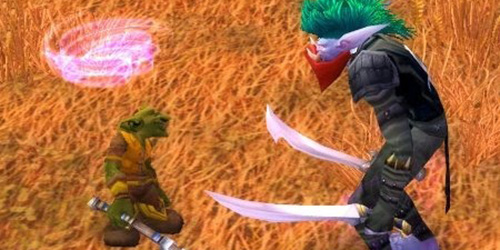
Stealth wisely: Don't waste time creeping at a snail's pace unnecessarily – it's fine to fight normal mobs head-on if they're a safe level. Use stealth primarily to skip packs that you'd rather not fight or to safely scout ahead in dangerous areas. Sap one mob, Cheap Shot the other, and you've neutralized a 2-pack instantly. If a situation looks hairy (multiple mobs or elite), remember that you can always Vanish (after level 22) or Sprint away to survive – more on escape techniques later.
In summary, leveling a rogue in Hardcore is about controlled aggression. Exploit your high damage to kill quickly, leverage stealth to avoid unwinnable fights, and never let your greed for XP override your survival instincts. If something feels too risky, it probably is. Better to live and level slowly than to die and lose everything.
Talent Builds for Hardcore Rogue
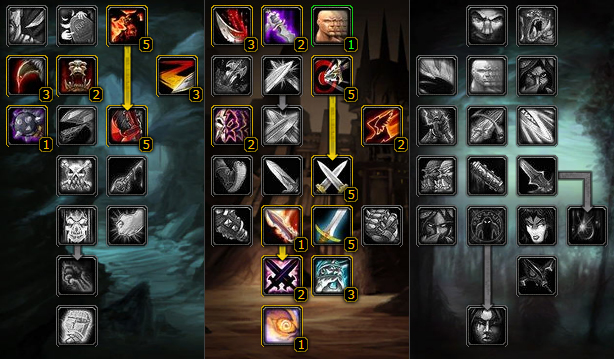
The right talent build can significantly improve your odds of survival and efficiency in Hardcore. For rogues, the consensus best leveling spec is Combat, with some early points in Assassination for a boost. Combat provides steady damage, cooldowns for tough fights, and less reliance on positional requirements than Subtlety.
Key talents to prioritize:
- Deflection: 5/5 for +5% Parry - crucial defensive boost
- Riposte: Disarm after Parry (1/1) - reduces incoming damage
- Blade Flurry: Hit two targets (1/1) - great for emergencies
- Adrenaline Rush: Double energy regen (1/1) - extra burst potential
Level 10-30 – Early Combat/Assassination Hybrid: At level 10, start in the Assassination tree with 2/2 Remorseless Attacks. This talent gives you a whopping 40% crit chance on your next ability after killing an enemy, which is perfect for chaining kills while leveling. Every time you slay a mob, your opener on the next one (whether that's Ambush, Cheap Shot, or Sinister Strike) has a high chance to crit and end the fight faster. It essentially snowballs your leveling speed and reduces damage taken (dead mobs can't hurt you!). After getting Remorseless, we dive into Combat:
- Combat Tree Priorities (10-30): Max out Deflection (5/5) early for +5% Parry chance – a defensive boon that can save your skin in melee fights. Pick up Riposte at 20 (requires Deflection maxed). Riposte is amazing for Hardcore: it's an instant attack that can only be used after you parry, costs only 10 energy, deals high damage, and disarms the target for 6 seconds. Against any weapon-wielding mob, Riposte massively reduces incoming damage (a disarmed enemy hits like a wet noodle). It's essentially a mini-CC and burst damage in one, available every 6 seconds if you keep parrying.
- Also invest in Improved Sinister Strike (2/2) and Improved Gouge (3/3) along the way. Reduced energy cost on Sinister Strike means more of them in a fight (more DPS), and Improved Gouge gives you an extra 1.5 seconds on Gouge – that's 1.5 more seconds to bandage or to re-position/stealth out if needed.
- By level 30, your talent spread will be roughly: 2 in Remorseless (Assassination), and the rest in Combat with key talents Deflection, Riposte, Imp SS, Imp Gouge, and maybe a point in Precision or Improved Slice and Dice.
At level 30, consider visiting your trainer for a respec. Why? Because now you can fully commit to Combat to rush the big talents like Blade Flurry. If you stay with the hybrid build, you won't get Blade Flurry until your late 30s or 40. But by respeccing at 30 and dropping the Remorseless Attacks (which is less crucial now that your kill speed is higher and you have more tools), you can invest those points straight into reaching Blade Flurry sooner.
Level 30-60 – Full Combat Build: After respec at 30 (or if you choose not to, by mid-30s), your build should focus entirely on the Combat tree:
- Mid-tier Combat Talents: Grab Precision (+hit chance) and Lightning Reflexes (+dodge) as needed, then get Blade Flurry at level 30 or 32. Blade Flurry is a game-changer – a 2-minute cooldown that cleaves an additional target, effectively doubling your damage output for 15 seconds. This is your ticket to safely handling 2 mobs at once or burning down a single elite very quickly. With Blade Flurry on, you can even dare to AoE farm small groups of lower-level mobs for fast XP, or at least kill two quest mobs together to save time.
- Continue down Combat: max Dual Wield Specialization, Improved Kick (interrupts are life-savers vs caster mobs), and so on, aiming for Adrenaline Rush at level 40. Adrenaline Rush doubles your energy regen for 15 sec, allowing an on-demand burst of Sinister Strikes and finishers. With Blade Flurry + Adrenaline Rush, a rogue becomes a whirlwind of death for a short period – many Hardcore rogues save these big cooldowns for "oh crap" moments or challenging elite fights.
- By level 50, you should have most of the Combat tree filled out, including goodies like Weapon Expertise (+weapon skill) for smoother hitting on higher-level mobs. At this point, you can start branching back into Assassination to boost damage: Lethality (crit damage) and Cold Blood (for a guaranteed crit on demand) are nice for finishing power if you go that far, but these are optional. Many rogues stick with pure Combat and throw extra points into Assassination last.
What about Subtlety? Subtlety talents (like Master of Deception, Opportunity, etc.) are generally not worth it for the Hardcore leveling phase. They shine in PvP and specialized PvE scenarios, but they won't help you kill mobs faster or survive better than Combat will. The only exception: if you absolutely love stealth, you could sprinkle a couple of points into Camouflage for faster stealth movement. However, you'd be sacrificing valuable combat power. Combat is king for leveling because it boosts both your offense and defense in sustained open combat, which is where most leveling happens.
By 60, an ideal Hardcore leveling build is Combat Swords: something like 31 Combat / 20 Assassination (picking up Cold Blood). This gives you all the Combat utility plus some Assassination crit boosts. If you prefer daggers, Combat Dagger build (with Opportunity, etc.) can work too, but it's generally slower to level with due to positional requirements. Swords let you just run up and Sinister Strike without needing to be behind the target.
Talent Build TL;DR: Go Combat, get Riposte, Blade Flurry, Adrenaline Rush ASAP. Early on, use Remorseless Attacks to speed up kill chains then respec out of it at 30 for maximum Combat efficiency. This approach gives you strong tools exactly when leveling starts getting tougher (30+). With the right talents, you'll feel like a lethal duelist, always ready to strike down enemies and slip away unscathed.
Survivability Tips for Hardcore Rogues
Survival is the name of the game in Hardcore. No matter how high your DPS, one mistake can end your journey. Rogues might not wear plate, but they have a survival toolkit rivaled by few. Here are crucial survivability tips to ensure you stay in one piece while slashing through Azeroth:
- Pull Carefully, Fight 1v1: The golden rule of Hardcore is to avoid fighting multiple enemies at once whenever possible. As a rogue, you excel at this. Use Sap to remove one mob from a multi-pack before engaging. If you accidentally pull two, open with Cheap Shot on one, burn it quickly, and Gouge or Blind the other to buy time. Use line-of-sight tricks: if facing ranged casters, LoS pull them – throw a dagger to pull, then duck behind a wall so they run to you, bringing the fight to your terms.
- Use Evasion Early and Smartly: Evasion (available at level 8) doubles your dodge chance for 15 seconds. Don't hesitate to pop it in tough fights – it's often the difference between life and death. If you engage a rare elite or get an extra add, hitting Evasion at the start of the encounter maximizes its benefit, potentially nullifying many incoming attacks. Just remember the cooldown is long (5 min), so reserve it for real threats. In normal 1v1 fights you expect to win, you can save Evasion, but always have it reachable in case things go south unexpectedly.
- Cooldowns Are Lifesavers: Aside from Evasion, abilities like Blind (level 34), Vanish (22), Sprint (10), and the big combat cooldowns (Blade Flurry, Adrenaline Rush) should be thought of as survival tools as much as DPS boosters. For example, don't be afraid to use Blade Flurry as a pseudo-defensive: the faster you kill something, the less damage it does to you. Adrenaline Rush can allow you to stunlock a dangerous enemy to death or finish off a mob before its deadly enrage (some mobs enrage at low HP). Blind is effectively a 10-second panic button crowd control on an enemy – if you get an unexpected add, Blind it and run or bandage. Just remember Blind requires a reagent (Blinding Powder), so keep some in your bags.
- Maintain Your Poisons: At level 20 you get the poison quest; from then on, always keep your weapons poisoned. For general leveling, Instant Poison on both weapons gives the most damage. However, carry some Crippling Poison in case you need to run – applying Crippling to your off-hand and hitting a pursuing enemy once will severely slow them, allowing a clean getaway or easier kiting. Also, if you plan to kite a tough mob, you can use Crippling to keep it snared while you wear it down with thrown weapons.
- Plan Escape Routes: Before engaging a tough pull, take a second to pan your camera around. Know where you'll run if things go wrong. Is the path behind you clear, or are there extra mobs that way? Having a pre-planned escape path can save you precious seconds when you need to disengage. For instance, if you're fighting in a cave, make sure you have a clear route to the exit – you don't want to Vanish or Sprint straight into re-pops or a dead end.
- Keep Health Potions Ready: This sounds obvious, but many deaths could be avoided by a timely potion. Always carry the highest healing potions you can use, and keybind them for quick access. A potion + a bandage + Evasion can nearly reset a fight in your favor. Also consider Thistle Tea (crafted via Cooking at skill 60, recipe from a quest) – it instantly restores 100 energy, which can fuel a flurry of Sinister Strikes or a quick Vanish->Cheap Shot combo to turn the tables.
- Use Line of Sight and Distance: If you get overwhelmed by melee mobs and Vanish is on cooldown or fails, you can try to create distance and reset. For example, Gouge one target and immediately back off to break combat drop (if you are far enough when Gouge wears off, the mob might evade reset). Or Sprint around a corner out of sight to break the chase. If you have to run, zig-zag or jump to avoid letting mobs get hits on your back – running straight away guarantees you'll be hit (and possibly dazed), but strafing or jumping while facing them can reduce that risk.
In essence, play every encounter in your mind before it happens. Rogues have the tools to escape almost any bad situation *once*. The only thing that will kill you is panic or not using those tools in time. A Hardcore rogue who uses every trick in the book will feel almost untouchable: mobs rarely get to hit you, and if they do, you have a plan to stall or escape. Keep your wits sharp, cooldowns at the ready, and never underestimate your opponents. Every fight is a dance with death – fortunately, rogues know the steps better than anyone.
Escape Techniques and Emergency Moves
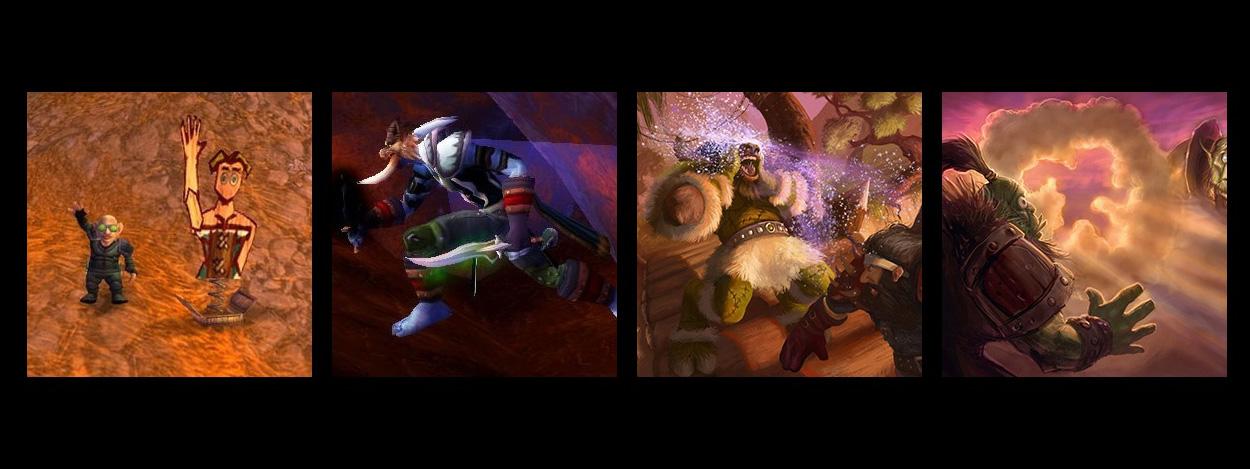
Even with careful play, you will eventually face a "do or die" moment in Hardcore – a pull gone wrong, a patrol that joins mid-fight, or a boss that hits harder than expected. How you handle these moments is what often separates survivors from the fallen. Rogues have a unique arsenal of escape techniques:
- Vanish (Level 22): Instantly drops combat and enters stealth. Create distance before using, and don't re-open too quickly.
- Blind (Level 34): Disorients target for 10 seconds. Perfect for disabling one enemy while dealing with another.
- Sprint + Gouge: Gouge to incapacitate, then Sprint away to create distance. Great when Vanish is unavailable.
- Evasion Tanking: +50% dodge for 15 seconds. Use to survive when escape isn't possible or to buy time for cooldowns.
1. Vanish (Level 22): Your ultimate escape card. Vanish instantly takes you out of combat by dropping you into stealth, clearing all threat and causing most NPC enemies to stop attacking you (they'll reset if you stay stealthed and leave the area). To make the most of Vanish:
- Create distance before Vanishing, if possible. If an enemy is right on top of you, there's a small chance it could immediately re-aggro if it performs an attack at the same moment you Vanish (this is often misinterpreted as "Vanish resisted" – but technically it's timing). The safer approach is to Sprint for a second or two, or Gouge the enemy, then Vanish when you're a few yards away so nothing can instantly hit you during the brief window.
- Don't re-open too soon. After Vanishing, you might be tempted to Cheap Shot the mob and finish it off. In Hardcore, consider whether that's necessary. If you Vanished to escape a lethal situation, your priority is survival, not vengeance. It's perfectly okay (and usually wise) to just stay stealthed and walk away, resetting the fight entirely. Regroup, heal up, wait for cooldowns if needed, then try again on your terms.
2. Gouge & Run: Gouge (available early at level 6) isn't just for bandaging – it's also a great disengage tool. If you're out of Vanish or it's on cooldown, you can Gouge an enemy (which incapacitates it for 4 seconds) and immediately hit Sprint to create a gap. The mob will recover from Gouge, but you'll have already gained distance. From there, if you are confident, you can try to drop combat by breaking line of sight or simply outrunning them (most mobs leash after a certain distance). Sprint's long duration (15 sec) is usually enough to get far away. Just be mindful of your surroundings; don't sprint headlong into unknown territory and pull even more mobs. Always know where your escape route leads.
3. Blind (Level 34): Blind is a fantastic emergency button. It's an instant 10-second disorient on a non-bleeding target (and doesn't break stealth if used from stealth). If two mobs are on you and things get heavy, Blind one and run the other way. The blinded target will stand uselessly for up to 10 seconds, giving you a huge head start to escape. Unlike Gouge, you can Blind an enemy that's chasing you without stopping – just target it and hit Blind on the move. Note: Blind requires a reagent (Blind requires one Blinding Powder, made from Fadeleaf), so always carry a stock of powder in your reagent pouch. It's worth its weight in gold for the lives it'll save.
4. Evasion Tanking: If escape isn't an option (perhaps your Vanish failed and Sprint is down), your last resort is often to go full toe-to-toe with Evasion up. With +50% Dodge, you can avoid a ton of damage for 15 seconds. During Evasion, start running toward the nearest safe spot (zone boundary, friendly guards, etc.) while keeping your face toward the mob (to continue dodging). If it's one tough enemy and you think you can finish it in 15 seconds, you might choose to stand and fight with Evasion – but be ready to pivot back to fleeing if it's still alive when Evasion fades. You can also pot+bandage during Evasion since your dodge chance is high; jump away, bandage while its swings mostly miss, then re-engage or keep running.
5. Target Dummy (Engineering, if available): If you took Engineering, the Target Dummy is a clutch escape device. You drop a Target Dummy and it taunts all nearby mobs to attack it instead of you. This gives you a window to run or Vanish safely. However, be cautious: if you Vanish while mobs are beating on the dummy, the moment the dummy dies, the mobs will look for new targets and might reacquire you even if you're stealthed (since you're still in the area). A safer approach is to drop a dummy and immediately Sprint far away. Let the dummy die while you're already making distance, and then Vanish if needed once the dummy is gone. Dummies are life-savers in dungeon settings or multi-mob pulls, but always assume you have only a short breather – use it to get out of Dodge, literally.
6. Hearthstone / Logout Trick: In extreme cases, a Hearthstone can be an escape tool – but it's unreliable under pressure. If you can survive 10 seconds of casting, you can hearth out of a bad situation entirely. In Hardcore, that's rarely viable mid-fight (mobs will interrupt you). Some seasoned players use the "Feign Logout" trick: start logging out (which takes 20 sec and drops combat if no mob hits you for 20 sec). This is generally not useful if you're actively being attacked, but if you manage to get out of combat and are hiding somewhere low-health with no outs, logging out can remove you from the game world safely until you can regroup (just pray nothing wanders by before the timer ends!). These methods are very situational – 99% of the time your rogue abilities will suffice.
In summary, rogues have an escape plan for almost every scenario:
- Overwhelmed by 3+ mobs? ? Blind one, Gouge another, Sprint away.
- Elite hitting too hard? ? Evasion tank and pot, or Vanish if it's going south.
- Pulled threat in a group or dungeon? ? Vanish to wipe it.
- Someone ganking you (PvP)? ? Blind and run, or Vanish and find a better position (covered more in the PvP section).
Always mentally categorize your escapes into tiers: minor cooldowns (Gouge, Blind) and major cooldowns (Vanish, Evasion, Sprint). Use the minor ones first if possible, and commit the majors when things are truly dire. A Hardcore rogue should never die with their cooldowns unused – if you're going down, go down swinging after exhausting every option. In most cases, you'll find one of these techniques will get you out alive, and you'll breathe a sigh of relief as you slink away into the shadows to fight another day.
Weapon Progression (Upgrading Your Arsenal)
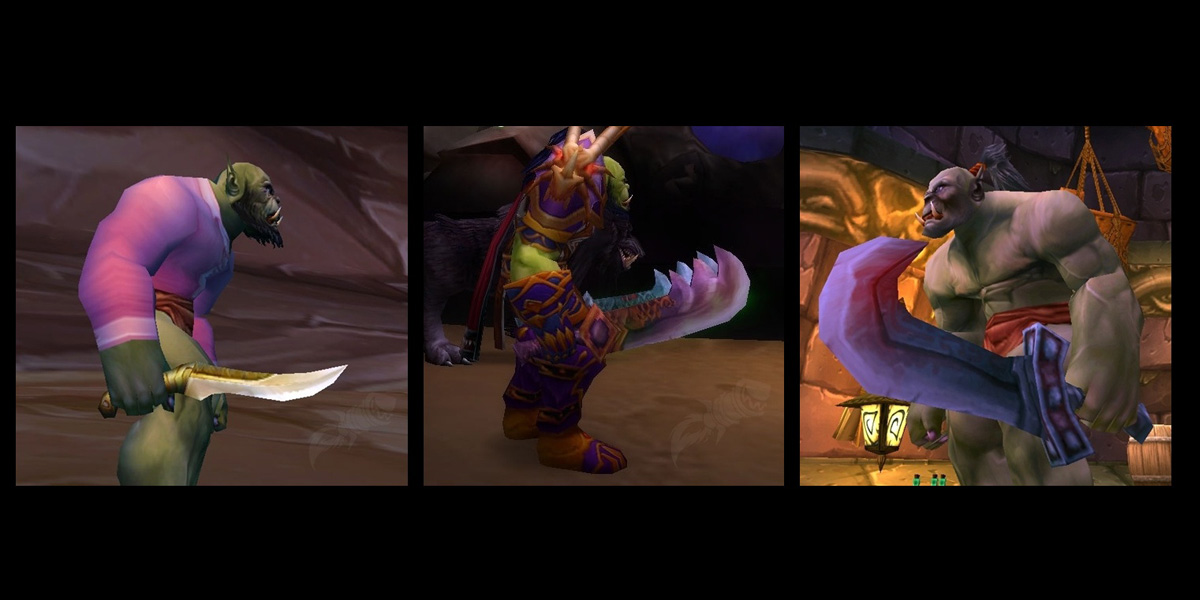
As a rogue, your weapons define your lethality. Keeping your blades updated can dramatically reduce your time-to-kill and, by extension, the time you spend in danger during fights. In Hardcore, a strong weapon is not just a DPS increase – it's a survival tool (faster kills = fewer enemy swings taken). Below is a recommended Alliance-side weapon progression path from level 1 to 60, focusing on easy-to-obtain weapons (quest rewards, vendor purchases, and guaranteed drops). We'll discuss Horde side after, which has analogous steps.
| Level Range | Recommended Weapon Upgrades (Alliance) |
|---|---|
| 1-9 | Pre-10: As soon as you have a few silver, buy a Stiletto from your starting zone weapon vendor. This cheap dagger often has higher damage than your starting weapons and will make levels 1-9 smoother. If you see a Scimitar (1H sword) or Tomahawk (axe) with better damage at a vendor and you've trained that weapon skill, those can work too – but Stiletto is usually the go-to early upgrade. |
| 10-15 | Train 1H Maces in Ironforge (for Alliance) at level 10. Complete the Dun Morogh quest "A Pilot's Revenge" and the linked "The Grizzled Den" (Lost Pilot quest line) around level 12. Choose the Compact Hammer as your reward – it has excellent top-end damage for this level. Meanwhile, do your level 10 rogue class quest to obtain the Blade of Cunning (a decent dagger for your off-hand). With a hammer main-hand and dagger off-hand, you're set for the low teens. |
| 16-20 | Purchase a Heavy Bronze Mace or similar Hammer from a weapon vendor (if available) for a main-hand upgrade around 16. Next, head to Loch Modan and do the quest "A Hunter's Challenge" (killing crocolisks). This yields Daryl's Shortsword as a reward, an excellent off-hand sword. Note: You'll need to train 1H Swords (in Stormwind) if you haven't. By level 20, aim to be using a solid mace in MH and Daryl's Shortsword in OH. |
| 21-25 | At 21+, check vendors in major cities for a Longsword upgrade (for MH) and a Kris for your OH. For example, the weapon vendor in Stormwind often stocks a Longsword (~20.5 DPS) which is great around lvl 21-25. The Kris (a fast dagger) can sometimes be found as early as level 19 at vendors – it's a fine off-hand choice due to speed for poison procs. If you did Deadmines, Cruel Barb (sword from Edwin VanCleef) is a fantastic MH option in this range, but we're focusing on guaranteed or easily bought upgrades. |
| 25-30 | If you picked Herbalism, you have a special treat: do the Wetlands quest chain starting with "Greenwarden" and culminating in "Tramping Paws" (where you help Rethiel the Greenwarden). Herbalists get an extra quest reward here: the Phytoblade, a very nice sword that carries Nature damage (great vs armor). Non-Herbalists can instead run The Stockade in Stormwind and complete "What Comes Around..." to earn the Lucine Longsword. Either way, by 28-30 you should be dual-wielding two solid swords. If luck is on your side, you might also get a Smite's Mighty Hammer (from Deadmines) or Sword of Omen (from Shadowfang Keep quest) around this level – both are strong MH weapons if obtained. |
| 31-34 | It's shopping time again at 31: grab a Broadsword from the weapon vendor. The Broadsword has high damage for its level (around 28 DPS) and will carry you into the mid-30s. There are not many easy quest upgrades in the early 30s, so a vendor Broadsword is a reliable choice. If you come across a Razorfen Kraul group in your early 30s, the dagger Swinetusk Shank from RFK is very good, but not required if you keep vendor weapons updated. |
| 35-39 | Mid-30s, go on an adventure to the Badlands. Complete the quest "A Dwarf and His Tools" which rewards Ryedol's Hammer. This one-hander mace packs a punch for the 35-39 window. Around 37-38, you should also consider doing Scarlet Monastery: Library wing – the quest "In the Name of the Light" (if you pick it up in Desolace) will reward the excellent Sword of Serenity (one of the best one-hand swords pre-40). Even without it, Ryedol's Hammer in MH and your Broadsword or Phytoblade in OH will serve well. |
| 40-45 | By level 40, a standout weapon is the reward from the Uldaman quest "Uldaman Reagent Run" (Alliance) or "Trogg Threat" (Horde) – Digmaster 5000 (a high DPS mace). However, Uldaman can be risky. Alternatively, running Maraudon in the late 40s for the quest "Corruption of Earth and Seed" yields the famous Thrash Blade at level 48. Thrash Blade is a must-have – its extra attack proc and solid DPS make it your BiS MH until 60. So plan a Maraudon run around 48-50 if you can, and grab that Thrash Blade. |
| 46-50 | Aside from Thrash Blade (if obtained at 48), also look at Zul'Farrak around 45-50: the quest "Nekrum's Medallion" in ZF rewards Bleeding Crescent (nice axe) for Horde or Gahz'rilla's Fang (dagger) for Alliance. These are decent if you do ZF. But if you have Thrash Blade, your next target is late 50s weapons. |
| 51-55 | In the low 50s, consider the quest chain in Felwood that starts with "Rescue From Jaedenar" and ends with "The Remains of Trey Lightforge". The final reward offers two weapon choices: if you somehow missed out on Thrash Blade, take the Tidecrest Blade (a strong sword). If you already have Thrash, take the Hunt Tracker Blade as an off-hand. By 55, an ideal combo is Thrash Blade (MH) + Hunt Tracker Blade (OH). |
| 56-60 | At this point, you might start doing end-game dungeons: Upper Blackrock Spire quests can reward Dal'Rend's Sacred Charge & Dal'Rend's Tribal Guardian (two swords from Warlord's Command quest chain in UBRS). Equipping both gives a set bonus and they are top-tier pre-raid weapons. Alternatively, Felstriker (a dagger from LBRS rare boss) is incredible if you're dagger-specced. If you are extremely geared or bold, consider the quest "The Greatest Race of Hunters" (requires Sunken Temple class quest chain) which gives Mirah's Song (sword) – not as strong as Thrash Blade or Dal'Rend's though. Ultimately, if you follow this guide, the Thrash Blade will likely carry you until you can replace it with a raid drop or epic, and even then it's a contender for best weapon pre-MC. |
And there you have it – a rogue's weapon progression guide fit for the stealthiest of heroes. Following the above, you'll always wield the highest top-end damage weapon available for your level (which is crucial since Sinister Strike, Backstab, etc., all scale with weapon damage). Remember, a faster off-hand is generally preferred for applying poisons, but not at the expense of huge DPS differences. So if your off-hand choice is between a 1.3 speed dagger and a much higher DPS sword that's 2.0 speed, take the DPS weapon – the extra poison procs from speed won't outweigh raw damage.
Horde Weapon Progression: Horde rogues will follow a similar philosophy:
- Buy vendor weapons early (Stiletto, etc.).
- Do Horde-specific weapon quests: e.g., "Baron Longshore" in The Barrens gives Baron's Scepter (nice mace around level 16). RFC/WC dungeons can net you Thief's Blade (RFC quest) and Wingblade (WC quest) which are excellent early weapons.
- In late teens, Horde can do SFK (Shadowfang Keep); a big prize there is Shadowfang sword or Assassin's Blade dagger (world drops) and quest reward Butcher's Slicer.
- Horde also have a weapon quest in Arathi ("Stolen Silver" for a sword reward).
- After that, many upgrades (SM, Maraudon's Thrash Blade, etc.) are the same for both factions.
So while the exact quests differ, the guiding principle holds: always be on the lookout for the next weapon upgrade. Check class discords or resources for Horde quest rewards equivalent to the Alliance ones listed. A Hardcore rogue who keeps their blades sharp will slice through leveling content with ease. May your strikes be swift, your crits be plenty, and your weapon drops be ever in your favor!
Level 60 BiS Gear (Pre-Raid Best-in-Slot)
Congratulations, you've made it to 60 on your Hardcore rogue – an achievement in itself! Now, if you plan to continue into end-game content (dungeons or even raids), gearing up with the best pre-raid items will maximize your performance and survival. Below is a list of Pre-Raid Best-in-Slot (BiS) gear for a level 60 rogue in WoW Classic. These are items obtainable from dungeons, quests, or crafted sources (no raid drops) that provide optimal stats for a combat rogue. Note that Hardcore players may choose slightly more defensive options in some slots, but we'll list the strongest overall items. Many of these come from the "tier 0" dungeon set or high-level instances like Strat, Scholo, UBRS, etc.
| Slot | Item (Pre-Raid BiS) | Source |
|---|---|---|
| Head | Mask of the Unforgiven | Drop – The Unforgiven in Strat UD (Best head: +Hit, +Crit) |
| Neck | Mark of Fordring | Quest – "In Dreams" (Tirion Fordring quest, EPL) (+AP, +Crit) |
| Shoulders | Truestrike Shoulders | Drop – Pyroguard Emberseer in UBRS (+Hit, +Crit; BoE world drop also) |
| Cloak | Cape of the Black Baron | Drop – Baron Rivendare in Strat UD (High Agi, +AP) |
| Chest | Cadaverous Armor | Drop – Multiple bosses in Scholomance (Good all-around stats, +Hit set bonus with Cadaverous gloves) |
| Wrist | Shadowcraft Bracers | Drop – Trash mobs in Scholomance (Part of Tier 0 set, decent Agi/AP) |
| Hands | Devilsaur Gauntlets | Crafted – Leatherworking (Devilsaur Set piece, +Crit, +Hit with 2-set) |
| Waist | Omokk's Girth Restrainer | Drop – Highlord Omokk in LBRS (Strength, Agi, Hit – strong belt) |
| Legs | Devilsaur Leggings | Crafted – Leatherworking (Best pre-raid legs, high AP, +Crit, part of Devilsaur 2-set) |
| Feet | Shadowcraft Boots | Drop – Baron Rivendare in Strat UD (or trash in Strat) (Tier 0 boots, good Agi) |
| Ring 1 | Painweaver Band | Drop – General Drakkisath in UBRS (Crit% ring, top choice) |
| Ring 2 | Blackstone Ring | Quest – "The Princess's Surprise" (BRD quest chain) (Agi/Hit ring) |
| Trinket 1 | Hand of Justice | Drop – Emperor Dagran Thaurissan in BRD (Melee attacks have chance for extra hit, huge DPS increase) |
| Trinket 2 | Blackhand's Breadth | Quest – "For The Horde/Alliance!" (UBRS quest) (+2% Crit trinket, free crit is always good) |
| Main-Hand | Dal'Rend's Sacred Charge | Drop – Warchief Rend Blackhand in UBRS (One of the Dal'Rend's swords pair; high top-end damage) |
| Off-Hand | Dal'Rend's Tribal Guardian | Drop – Warchief Rend Blackhand in UBRS (Other Dal'Rend sword; together the set gives +50 AP) |
A few notes on the above gear:
- The Devilsaur 2-piece set (leggings + gloves) is insanely good: together they grant +2% hit, on top of great stats. These are crafted from Devilsaur Leather (which you or someone will need ~300 LW to make). Highly recommended for any rogue not raiding yet.
- The Shadowcraft pieces (rogue Dungeon Set 1) are decent stop-gaps. You might accumulate several: the cap, chest, legs, etc. However, the listed pieces above generally outperform Shadowcraft in critical areas like +Hit or +Crit. For example, Mask of the Unforgiven beats Shadowcraft Cap, Cadaverous Armor beats Shadowcraft Tunic for hit/crit.
- Alternative weapons: If Dal'Rend's Blades (a.k.a. "The Twin Blades of Hakkari" set) don't drop for you, there are alternatives: Thrash Blade (from Maraudon quest) can carry as a main-hand into early raids, Mirah's Song (quest reward) or Flurry Axe (world drop) can work in off-hand. But Dal'Rends are the ideal pre-raid combo for a sword rogue. Dagger rogues might use Felstriker (LBRS rare drop) or Bonescraper (Stratholme) as BiS daggers.
- As a Hardcore rogue, you might favor a bit more stamina on gear to survive mishaps. For example, you could use Shadowcraft Pants instead of Devilsaur if you really need extra HP (Shadowcraft has +sta, Devilsaur has none). But offensively, Devilsaur + all the listed pieces will serve you best.
By equipping the above BiS items, you'll be raid-ready with ~8-9% Hit (capped for specials), good crit %, and high Attack Power – all without setting foot in a raid. This means even in Hardcore, you can achieve an excellent gear set purely through dungeon farming and crafting. Of course, always weigh the risk of repeated dungeon runs in Hardcore; running Scholomance ten times for a drop is inherently risky. Gauge your comfort and perhaps recruit trustworthy allies or use careful tactics (having a level 60 healer friend, etc.).
Finally, don't forget enchants! Enchant your weapons with +Agility or Crusader, get +7 Agi on gloves, +9 stamina on bracers, etc., to further boost your stats – every little bit helps in Hardcore where you want every advantage against death.
Useful Macros for Rogues
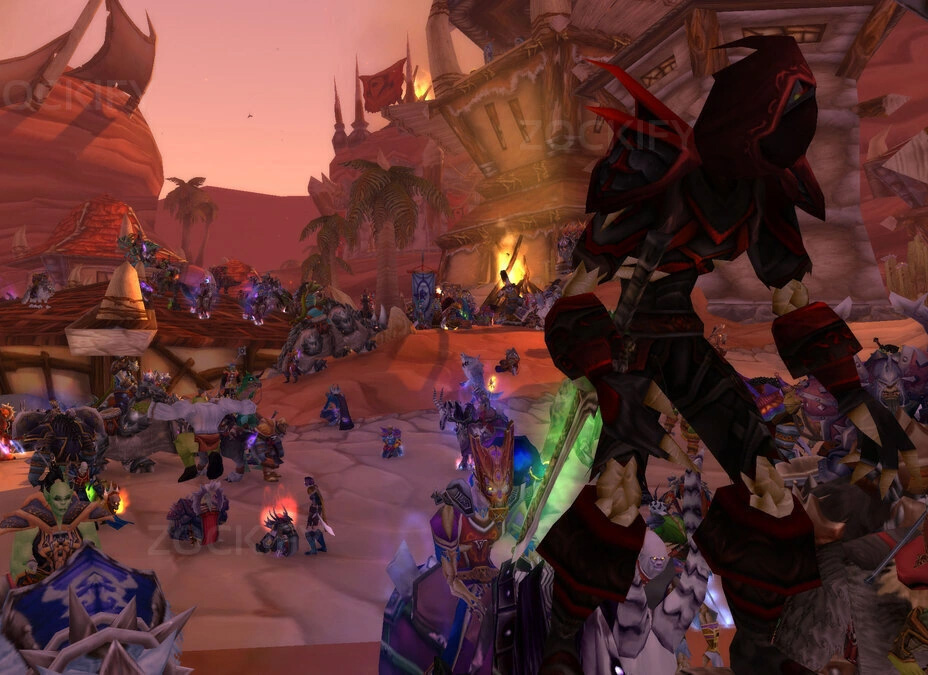
Macros can automate sequences and improve your reaction time – extremely valuable in Hardcore when every second counts. Here are some helpful macros tailored for rogue gameplay:
Startattack Macro
#showtooltip Sinister Strike
/startattack
/cast Sinister StrikeEnsures you always begin auto-attacking when using abilities, even if out of energy or range initially.
Pick Pocket with Openers
#showtooltip Garrote
/cast Pick Pocket
/cast GarroteAttempts to pickpocket before using your opener, allowing double-profit from each mob.
This attempts to pickpocket the target just before Garrote lands. If you're in stealth and in range, Pick Pocket won't break stealth and will succeed, then Garrote immediately applies. Just be careful not to spam the macro, as hitting it twice could potentially break stealth after the Garrote (since the second click might attempt Pick Pocket out of stealth). Hitting it once per opener is enough. You can do similar macros for Cheap Shot and Ambush.
3. Mouseover Kick/Blind Macro: In group content or PvP, sometimes you need to quickly kick a different target than your current one (e.g., an add starts casting a heal). A mouseover macro lets you interrupt without switching targets manually. For Kick:
#showtooltip Kick
/cast [target=mouseover, exists, harm, nodead][harm,nodead] KickThis will cast Kick at your mouseover target if you have one (and it's an enemy), otherwise it will cast it at your current target as normal. You can use the same format for Blind (just replace spell name). This saves precious time in clutch interrupt situations – just mouseover the enemy or nameplate and hit Kick. In Hardcore, interrupting that one Shadow Bolt or Polymorph can be life-saving.
4. One-Button Poison Application: Applying poisons to weapons frequently can be a hassle. This macro can streamline that. It allows you to left-click the macro to poison your main-hand and right-click it to poison your off-hand. You'll have to update the poison rank in the macro as you learn new ones. Example for Instant Poison VI:
#showtooltip Instant Poison VI
/use Instant Poison VI
/use [button:1] 16; [button:2] 17
/click StaticPopup1Button1Here:
/use Instant Poison VIuses the poison from your inventory.- The next line says: if left-click (
button:1), use it on inventory slot 16 (Main Hand weapon); if right-click (button:2), use on slot 17 (Off Hand). - The last line clicks "Okay" on the confirmation dialog that "Use poison on that weapon?" so it automates the confirmation.
With this macro, you can drag it onto your bars (it will show the tooltip and icon of Instant Poison VI). Left click it to apply to main hand, right click for off hand. You can make a separate one or modify it for Crippling Poison similarly (or change the rank number when you get Instant Poison VII, etc.). This just makes reapplying poisons between pulls a quick tap rather than navigating bags and menus.
By using these macros, you eliminate small delays and potential mis-clicks. In Hardcore, those efficiencies add up. Imagine being able to reliably Kick a second mob casting without changing target (preventing extra damage), or always getting your auto-attacks going so you kill 1-2 seconds faster. It all contributes to a safer leveling experience.
Of course, many more advanced macros exist (weapon swapping macros for swapping in a throwing weapon and back, etc.), but the above are some of the most broadly useful. If you're new to macros, start with these and add more as you become comfortable.
PvP Survival Tips for Hardcore Rogues
Engaging in PvP on a Hardcore character is a high-risk, high-reward proposition – mostly high-risk. On official Hardcore servers, you cannot be ganked unless you voluntarily flag yourself, but you might still partake in duels or the specialized "Duel to the Death" feature Blizzard introduced. In the community Hardcore challenge (on PvP servers), world PvP can happen anytime in contested zones. Here are some tips to survive PvP encounters when a single death means game over:
- Avoid Unnecessary PvP: The simplest advice – if you value your Hardcore character's life, don't engage in PvP unless you're truly prepared to accept the consequences. That means no random ganking sprees or chasing that one Alliance/Horde who "stole your node." It's just not worth the risk. However, if you love the thrill or find yourself forced into a fight, read on.
- Duels (Mak'gora – Duel to the Death): On official realms, you can initiate a deadly duel via an NPC. If you choose to do this, treat it like a planned gladiator match:
- Pre-buff and prepare extensively. Use Elixirs, scrolls, food buffs (e.g., Cooked Deviate Fish for Agi/Str, Rumsey Rum for Stamina) – everything at your disposal.
- Equip Engineering gadgets: Dense Dynamite, Iron Grenades, Net-o-Matic, etc. Engineering shines in PvP. A well-timed grenade to stun your opponent can allow a kill or an escape.
- Know your opponent's class. Rogues have different strats for each class: vs Mages, save Vanish to escape their final burst, use Cloak of Shadows (if TBC era or later) or LOS to avoid big spells; vs Warriors, kite them during their retaliation using Crippling and Gouge, etc. While a full class-vs-class breakdown is beyond scope, enter each duel with a plan for that class (there are many rogue PvP guides out there).
- Use cooldowns proactively. Don't "save" Evasion or Blind for later if using it now will secure an advantage. In a lethal duel, there is no later if you lose.
- Open World PvP (if flagged): If you're on a PvP realm or become flagged, the #1 rule is situational awareness. A Hardcore rogue should use Detect Traps and Stealth often when in contested zones. If you suspect enemy players around, consider going into stealth to avoid being the easy target.
- Pick your battles wisely. Rogue's advantage is choosing when and where to fight. If a higher-level or multiple enemies are around, discretion is the better part of valor – hide or flee.
- Escape > Kill: In Hardcore PvP, it's often smarter to escape an encounter than try to finish off an opponent at 10% while you're also low. If you've forced an enemy to retreat but you're wounded too, let them go. Reset, restealth. Remember, your goal is survival, not honor points.
- Blind and Vanish are your get-out-of-jail free cards. If jumped by surprise, Blind the attacking player (this will break if they take any damage, so try to get out of combat right after) and immediately run around a corner and Vanish. Most players won't have a counter ready for an unexpected Blind+Vanish, and you'll successfully escape combat. From there you can either re-engage on your terms (if you're confident and healthier) or just disappear.
- Use terrain and line of sight. Rogues can climb or position in odd spots in world PvP. If being chased, Sprint and use terrain to break line of sight. You can even try tricks like jumping off a cliff and using a parachute cloak or Slow Fall potion (Noggenfogger) mid-air to confuse pursuers – while they go the long way down, you vanish or stealth.
- Keep PvP trinket or insignia (if any): In later phases or expansions, the insignia that breaks CC (e.g., "Insignia of the Alliance/Horde") is invaluable to break stuns or Polymorph. If you have access to one, always equip it in PvP scenarios.
- Beware of Grief Tactics: Unfortunately, not everyone plays fair. Even on PvE Hardcore servers, griefers might try tricks like training mobs into you or using mind control to force flag you. Always be on guard in hotspot areas (e.g., Gurubashi Arena – basically a no-go for Hardcore unless you're with a trusted group, as it's Free-for-All PvP zone). If something seems fishy (like a priest constantly following you around), be ready for potential dirty plays. In known grief situations, it might be best to hearth out or log onto a different character until it's safe.
- Group PvP (Battlegrounds): Currently, Hardcore mode and battlegrounds don't mix well – a death in a BG is still a death. Most Hardcore challenges outright forbid BGs because death can often be out of your control there. If in the future special rules or events allow Hardcore BGs, treat it like the duel scenario: only go in fully prepared and knowing you could lose your char. Fighting alongside a premade group with voice coordination would be advised.
In summary, think of PvP in Hardcore as the optional "hard mode" on top of an already hard mode. Rogues are actually one of the best classes for surviving PvP encounters due to stealth and escape tools. You can often avoid PvP entirely or dictate the terms of engagement. Many Hardcore players simply opt out of PvP until 60 (where then they might duel for glory). If you do fight, fight dirty and fight to live – there's no sportsmanship when your life is on the line. Use every potion, engineering trick, and cheesy tactic you can. There are no second chances out there, so if you decide to gank or duel, make sure you win or at least walk away alive.
Professions and Survival Synergy
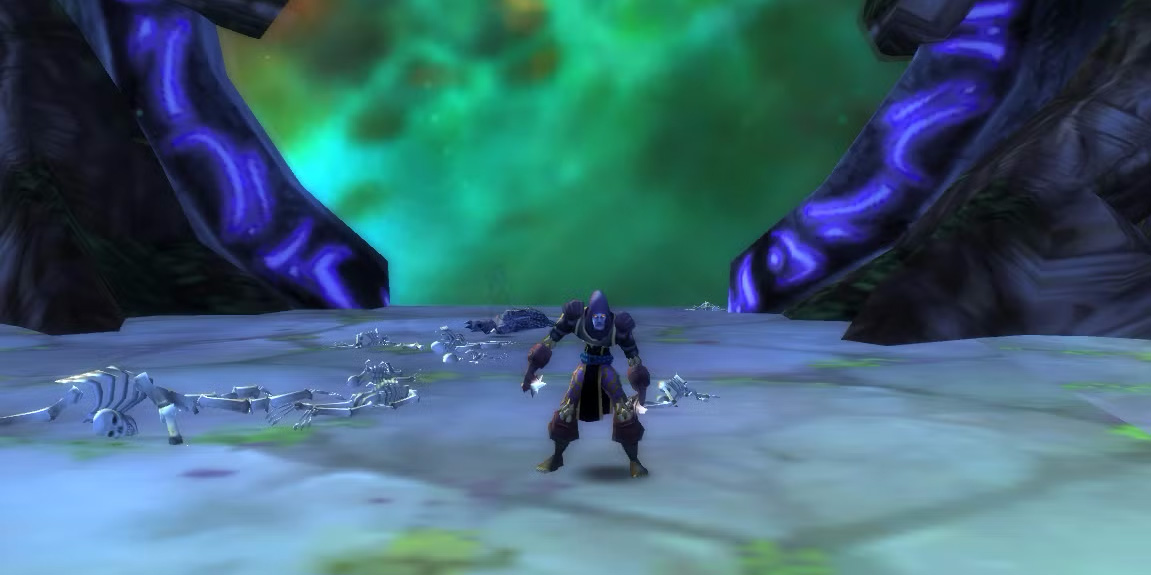
Professions in Hardcore aren't just a gold-making tool – they can directly impact your survival and efficiency. Two combinations stand out for rogues:
Alchemy + Herbalism
- Healing Potions - Direct self-healing when you need it most
- Elixir of Agility - Agility/Strength boosts for tougher fights
- Fadeleaf - Create your own Blinding Powder for escapes
- Swiftthistle - Key ingredient for Thistle Tea energy boost
- Free Action Potions - Immunity to stuns and roots
Engineering + Mining
- Iron Grenade - AoE damage + 3 second stun for emergencies
- Target Dummy - Taunt mobs away from you when overwhelmed
- Goblin Rocket Boots - Additional escape option when Sprint is on cooldown
- Green Tinted Goggles - Stat-boosting headgear earlier than drops
- Gnomish Net-O-Matic Projector - Root enemies in place for better kiting
Secondary Professions (First Aid, Cooking, Fishing)
Every rogue in Hardcore should take First Aid – this is non-negotiable. First Aid lets you craft and use bandages, which are a lifeline between or even during fights. As mentioned, you can Gouge and bandage or Blind and bandage in combat to heal up when you have no other means. Max out First Aid as you level. At level 40, do the triage quest to become an Artisan First Aid and get those Heavy Mageweave and Runecloth bandages crafted. A Heavy Runecloth Bandage heals 2000 health over 8 sec – that's virtually your entire HP bar in pre-raid gear. It's an absolute lifesaver.
Cooking is very useful up to 60 skill to make Thistle Tea. Thistle Tea is a rogue-only beverage that instantly restores 100 energy on a 5 min cooldown. The recipe is obtained via a quest at level 20. This is essentially a free Adrenaline Rush on a 5-minute timer – insanely good for emergencies or burst. Leveling Cooking to 60 is easy, and beyond that you can also cook foods that give buffs (Stamina/Spirit from cooked meats, etc.), which while minor, are still buffs! Plus, Cooking provides some fun and useful quests (and achievements, if you care). It's definitely worth having at least Tea and some basic stat foods.
Fishing, frankly, is skippable for rogues in Hardcore. It's time-consuming and doesn't offer immediate survivability benefits unless you pair it with Cooking for certain recipes. Unless you enjoy it, you can safely skip Fishing to spend more time on other things (like leveling or farming important mats). One niche use: fishing up Stonescale Eels for Stonescale Oil (for Free Action Potions, etc.) – but you can often buy those or have guildies do it. If you find fishing relaxing and not risky, it won't hurt to have, but it's not a priority.
Primary Professions (Alchemy vs Engineering vs Others)
When it comes to primary professions, two combinations shine for Hardcore rogues: Herbalism/Alchemy and Mining/Engineering. Let's break them down:
- Herbalism & Alchemy: This combo is arguably the most popular among Hardcore players. Why? Because it provides a self-supply of consumables that increase your survivability:
- Healing Potions: You can craft your own potions, ensuring you always have a stack of heals at the ready.
- Elixirs and Buff Potions: Agility elixirs, Defense potions, Troll's Blood regen, etc., can make a difference, especially for tough fights or dungeons.
- Thistle Tea ingredients: Swiftthistle (for Tea) is gathered via Herbalism from briarthorn or mageroyal. Having Herb makes sure you can farm your own Swiftthistle easily.
- Blinding Powder mats: Fadeleaf, used to create Blinding Powder for your Blind ability, is also gathered by Herbalism. Being self-sufficient on Fadeleaf means you can keep a healthy stock of Blinds ready.
- Limited Invulnerability Potion, Free Action Potion: Alchemy can craft very powerful situational potions. Free Action Potions (prevent stuns/roots for 30 sec) can let you ignore an otherwise lethal stun. These require Oily Blackmouth fish, but you can trade/buy for those.
- Simply put, Alchemy turns you into a walking arsenal of buffs and emergency buttons. Many Hardcore rogues attribute their survival to a timely potion or an extra buff that let them edge out a win.
- Mining & Engineering: Engineering is the other top choice for rogues in Hardcore. Engineering provides:
- Explosives: Iron Grenades, Dense Dynamite, etc., which add AoE damage and more importantly a 3 sec stun (grenades) usable by any class. This is extra crowd control and damage that can be clutch when you're overwhelmed.
- Target Dummies: As mentioned earlier, these devices taunt mobs off you for a short time. A CD of only a few minutes means you can use them regularly when questing in dangerous areas. They have saved countless Hardcore lives by giving a window to escape.
- Goblin Jumper Cables: While you can't resurrect yourself, if you duo with another (or plan to) you can revive a dead party member with Goblin Jumper Cables. This is more of a group benefit (and doesn't help if you're solo unless another player is around to use on you after you die – but then, your run is over anyway unless playing with some self-imposed rules).
- Additional Trinkets: Engineering has quirky gadgets like the Net-o-Matic Projector (nets a target – or sometimes yourself, risky), Flash Bombs (fear beasts/undead, situationally useful if you pull animal packs), etc.
- Goggles: Engineers can craft headgear with solid stats, sometimes before you’d get equivalent from drops.
- Best PvP Trinkets: Engineering provides things like the Reflectors (to reflect spells) and Rocket Helm (charge + incapacitate target) which are super useful in PvP or emergency situations. The Rocket Helm essentially is another “oh crap” CC – it lets you charge and knock out a target for 30 seconds, which could let you escape a bad pull.
- Enchanting lets you enchant your gear (nice for tweaks like +100 HP on chest or +Agility on weapons), but leveling Enchanting is expensive and time-consuming, and it doesn’t have “save my life now” buttons.
- Tailoring is virtually useless to a rogue.
- Blacksmithing can make some weapons, but rogues can’t use most of the good ones (those are for warriors/paladins) and it doesn’t justify picking over Alch/Eng.
- Inscription didn’t exist in Classic era, so no need to consider.
The downside of Engineering is it can be expensive and you need Mining to support it (or lots of buying materials).
Important Caution for Hardcore RoguesIf you drop a Target Dummy and Vanish immediately, you risk breaking stealth as soon as the dummy dies. Always try to Sprint away after dropping a dummy rather than Vanishing instantly.So there is a slight learning curve to using engineering items optimally in Hardcore (so you don’t inadvertently get yourself killed with your own devices). But the benefits are huge. Many Hardcore veterans swear by Engineering as the ultimate “extra life” toolkit.
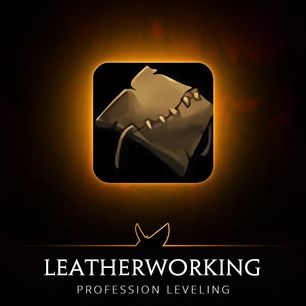 Skinning & Leatherworking
Skinning & LeatherworkingThis combo is more about self-sufficiency in gear rather than game-changing abilities. Leatherworking can craft some decent gear while leveling (e.g., the Deviate Scale Belt early on, or Wicked Leather items later) and notably the Devilsaur Armor set at 55+ which is BiS pre-raid gear as discussed.
However, aside from gear, it offers little in terms of emergency utility. You might save some gold by crafting your own armor, but it won’t directly prevent death like a healing potion or a target dummy can.
Skinning does give you cash from leather sales and easy leveling of Leatherworking, but if you choose this path, do it because you enjoy crafting your own gear, not for power. In Hardcore, Leatherworking is a luxury, not a necessity.
Other Professions
Most other professions don’t offer enough survival benefit to recommend:
Professional RecommendationTo truly complement a Hardcore rogue, stick to the professions that give tangible combat benefits. If you want steady buffs and self-reliance: go Herbalism/Alchemy. If you want gadgets, crowd control, and PvP tricks: go Mining/Engineering.You can’t go wrong with either choice (some rogues even take Engineering and Alchemy together, dropping a gathering profession at end-game, to get the best of both worlds). Just remember to also level First Aid and Cooking enough for Thistle Tea – those are essentially part of your class toolkit.
By mastering your professions, you’re not just a sneaky stabber, but a resourceful survivor loaded with potions and tricks for every occasion.
Frequently Asked Questions
Q1: Is Combat truly the best spec for Hardcore leveling?A: In almost all cases, yes. Combat offers the best balance of damage and survivability for leveling. The ability to parry more attacks (Deflection), burst down enemies (Adrenaline Rush, Blade Flurry), and handle unexpected adds (Riposte, improved Gouge) makes it ideal for Hardcore where mistakes can be fatal.
Assassination/Subtlety hybrid can be used early (we suggest opening with 2 points in Remorseless from Assassination) for a crit boost, but ultimately a Combat build will outperform once you get key talents. Subtlety has fun tools like improved stealth and preparation resets, but its damage is lower and it doesn’t kill fast enough to be as safe.
Remember, faster kills often mean safer leveling. That said, if you are extremely experienced or have a specific playstyle, you can level as you wish – but if you’re asking this question, stick to Combat for the smoothest Hardcore experience.
Q2: What happens if my Rogue dies in Hardcore mode?A: In official Hardcore servers, death is permanent – your character will become a ghost and cannot be resurrected or traded anymore. Essentially, that character’s journey is over; most players choose to delete the character after recording the death.
In community Hardcore challenges (where you play on normal servers with self-imposed rules), the rule is you must delete your character if you die. Some add-ons will even announce “Character X has died at level Y”.
It’s harsh, but that’s the point of Hardcore. The best you can do is analyze how you died, learn from it, and roll a new rogue with that knowledge. Many Hardcore players treat each death as a lesson – perhaps an area to avoid or a tactic to change.
And remember, there’s no shame in making it to a high level and dying; it’s an accomplishment to have gotten far. If the unthinkable happens, take a breather, review this guide for anything you might improve, and when you’re ready, start anew. Azeroth always has more rogues waiting to make their mark!
ConclusionWe hope this comprehensive Hardcore Rogue guide helps you on your perilous journey. The road to 60 will test your patience, reflexes, and decision-making, but armed with the knowledge of leveling strategies, optimal talents, survival tactics, gearing, and rogue-specific tricks, you have all the tools needed to succeed.Remember that in Hardcore, caution is your constant companion. Even as a stealthy rogue, never get overconfident – plan every big fight, keep those cooldowns handy, and don’t hesitate to run when danger spikes.
Now sharpen those daggers, stock up on potions and powders, and embrace the thrill of Hardcore Classic. Whether you’re pickpocketing your way through Stranglethorn or vanishing from an angry crowd in Blackrock Depths, every moment will have your heart pounding. And when you finally hear that *Level 60* dings without a single death, you’ll join the ranks of the elite. Good luck out there, keep it sneaky, and may your Vanish never fail when you need it most. Happy hunting, rogue!

